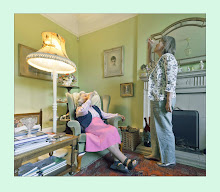Have been invited to an opening at Magnum in London of the following exhibition ... it is interesting to reflect on the way photographs made sometime ago may now be read in a different way! The following from the Magnum website seems worth reading.
The Black Chronicles
Autograph ABP’s and Magnum’s objective is not to establish a prescribed way in which to read the presence of black people in photographic archives. Rather, it is to open critical enquiries into the archive to extract content not just by offering a reading of the aesthetic qualities contained within a photograph, but to examine ideological conditions in which photographs were produced and the purpose they serve as agents of communication.
This exhibition brings together the work of four different photographers, who have brought the black subject into focus through their work as longstanding Magnum members. It is therefore an invitation to unpick the authority the archive generates. This exhibition marks a modest beginning of an open enquiry that operates across many photographic archival stories in which the black subject is classified and fixed.
Wayne Miller was one of the first Western photographers to document the destruction of Hiroshima. He had just returned from World War II working as a Navy photographer when he received two Guggenheim fellowships to fund an in-depth documentation of African-American life on Chicago’s Southside. The project, started in 1946 and spanning three years, captures both the cultural renaissance and the grim economic realities faced by the city’s largest black community in the immediate post-war era. Miller’s evocative black and white images provide a visual history of Chicago at the height of its industrial peak when the stockyards, steel mills and factories were booming. More significantly they capture intimate moments in the daily lives of ordinary people; factory workers, churchgoers, families and courting couples.
One of Magnum’s founding fathers, British photographer George Rodger produced a series of portraits charting the arrival of Afro-Caribbean migrant families at London’s Waterloo station in 1964, photographed as part of a wider project entitled Impressions of Britain. Photographs of smartly dressed families are displayed alongside Rodger’s original, hand marked contact sheet.
Following his powerful portrayal of South Africa under apartheid, Ian Berry spent a significant period during the 60s and 70s photographing England as part of the first Arts Council Photography Bursary. His photographs of multicultural and black communities include several photographs that reveal an increasingly diverse British society, for example, two black male nurses tending to an elderly white gentleman and a dancing interracial couple, seemingly caught off guard by Berry’s lens.
Chris Steele-Perkins’ portfolio includes intimate portraits in 1970s Brixton; families dressed in their church finery, schoolboys toying with the latest stereo technology, and a documentary series on Wolverhampton’s dancehall and disco club scene in 1978.
‘Curators in most instances simply replicate and maintain the power structures inherent in the archive. This process signifies an enquiry into what is clearly unfinished representational business, as we look further into the world’s image banks. The challenge is to avoid the trap of definitive story telling and to present photographs that enable reinterpretive moments, meanings and references to surface from within the archive. References that generate either real orn imagined experiences that enter the diverse fields of perception that viewing these historical photographs may trigger’. Mark Sealy, Director, Autograph ABP
‘Clearly archives are not neutral: they embody the power inherent in accumulation, collection, and hoarding as well as that power inherent in the command of lexicon and rules of language. Within bourgeois culture, the photographic project itself has been identified from the very beginning not only with the dream of a universal language but also with the establishment of global archives and repositories according to models offered by libraries, encyclopedia, zoological and botanical gardens, museums, police files and banks.’ - Allan Sekula

No comments:
Post a Comment